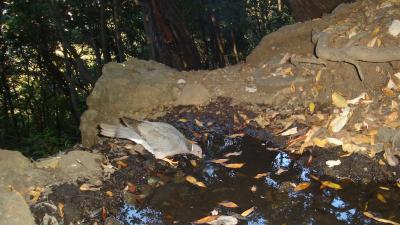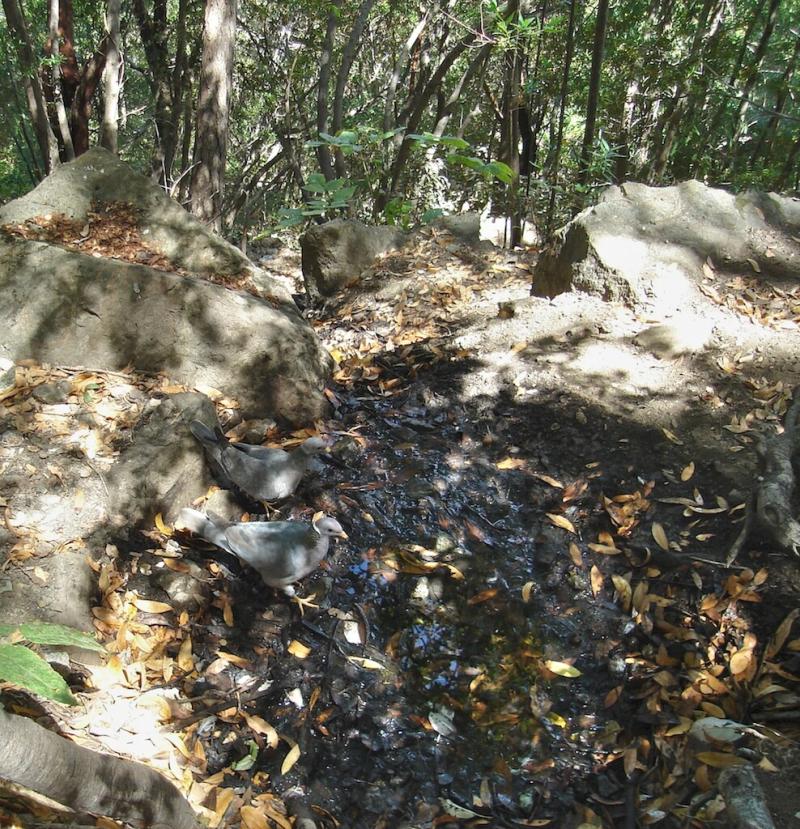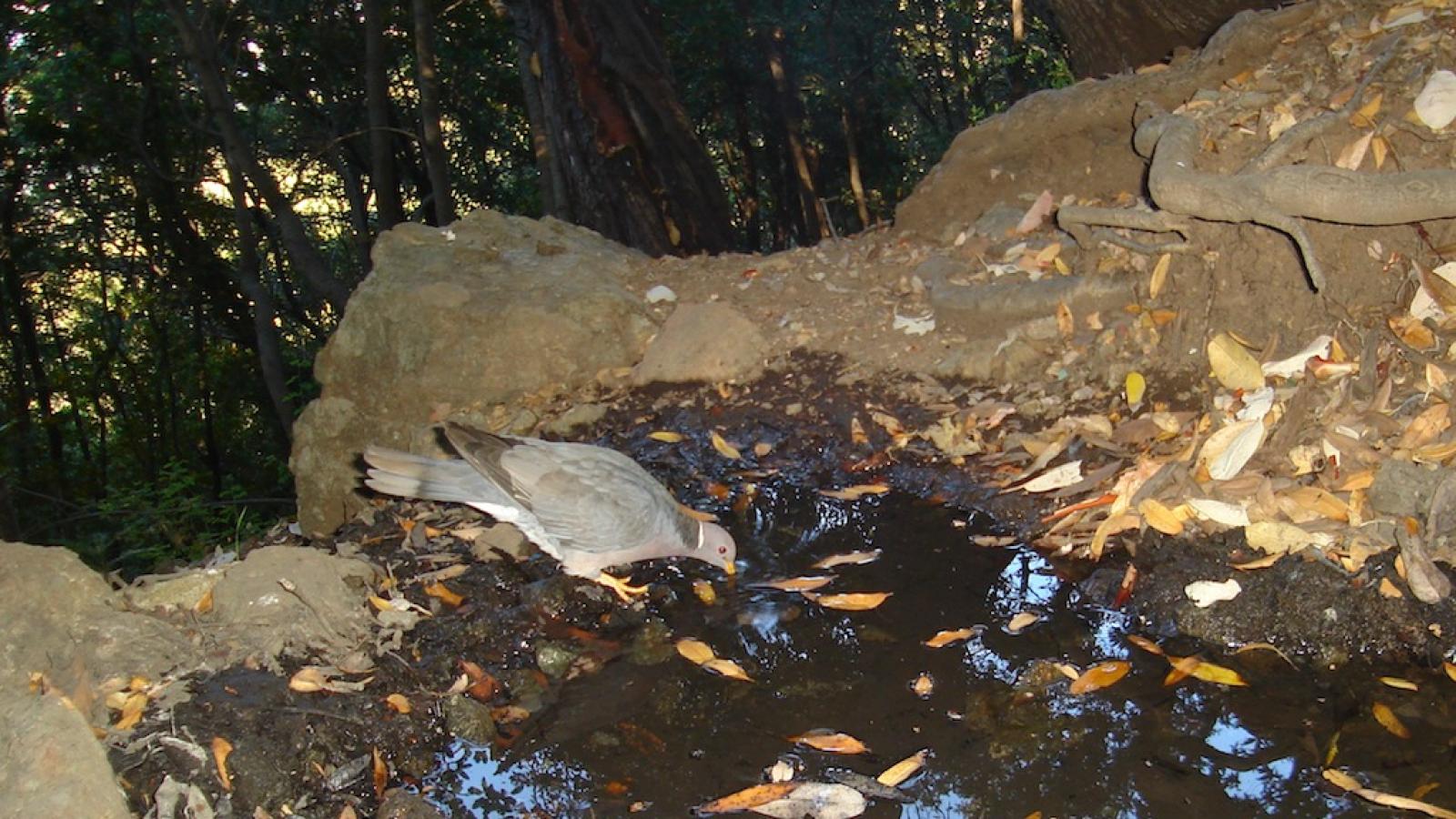Pigeons are often seen as mundane, but band-tailed pigeons (Patageioenas fasciata) are anything but. This bird species is California’s only native pigeon and the largest pigeon in North America (they can grow up to 16 inches long from head to tail). In addition to the band-tailed pigeons' large size, they can be differentiated from normal rock pigeons by the white collar of feathers at the back of their necks, the pale band at the tip of their long tails and their purple-grey belly feathers.
We are lucky to live in the Bay Area where these birds live and breed year-round. Unlike most bird species, band-tailed pigeons do not have a home range that they stick to. They roam throughout the year, traveling in search of abundant food sources. Band-tailed pigeons are usually found at higher elevations in the Santa Cruz Mountains – in oak woodlands and chaparral scrublands – though they will move closer to urban areas in search of food when drought makes wild food scarce. The band-tailed pigeon’s diet shifts with the seasons. Acorns are a major part of their diet when available. They also eat many berries, including manzanita, juniper, elderberry, toyon and wild grape, as well as seeds, young leaves, buds, flowers and occasionally insects.
Though listed as a species of least concern, band-tailed pigeons pose a conservation challenge. Since 1968, their population has declined by an average of two percent every year. Loss of mature oak woodland and chaparral habitat, their low reproductive rate (one chick per year) and disease are the largest factors contributing to this decline. It was recently discovered that two protozoan parasites in the Trichomonas family are responsible for several large band-tailed pigeon die-off events.
Some band-tailed pigeon fun facts:
- They feed their young with a curd-like “pigeon milk” that is made in a parent bird’s crop.
- They are the closest genetic relative of the famously extinct passenger pigeon.
- A passenger pigeon louse that was thought to have gone extinct with its passenger pigeon hosts was recently rediscovered on a band-tailed pigeon!
- They can swallow acorns whole.
- Like other pigeon species, they make a distinctive noise as they fly, known as a "wing whistle."



